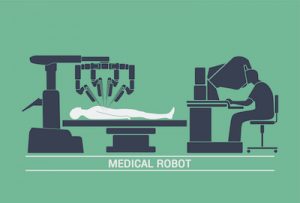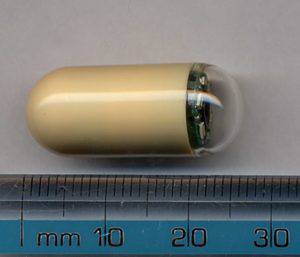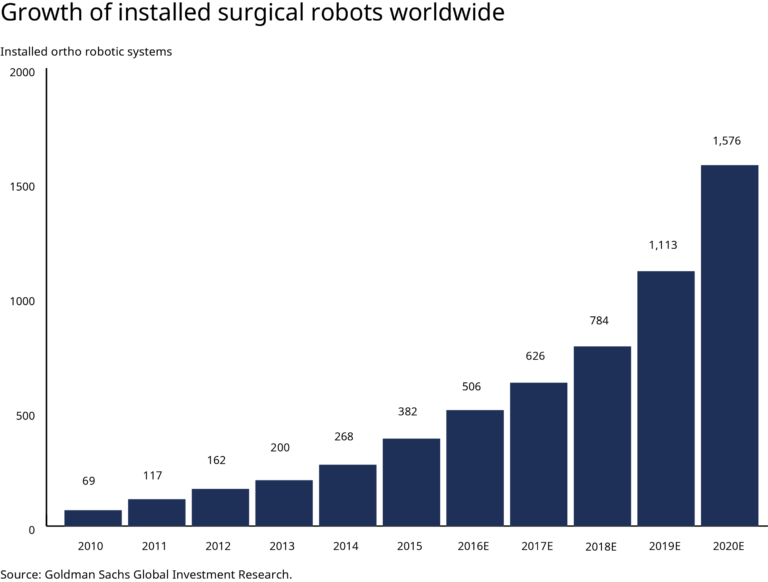Can robots effectively assist surgeons with their procedures?
Overview
In an ongoing effort to make their procedures more successful and efficient, doctors and surgeons are now using robots in surgery. Most of these systems, classified by the Food and Drug Administration as robotically-assisted surgical (RAS) devices, allow surgeons to perform operations using a console that controls surgical arms, cameras, and other medical instruments. RAS systems can result in fewer and smaller incisions, lowering the likelihood of blood loss and infections, often causing less pain and fewer complications for patients. Given these benefits, surgical robot systems have seen huge growth over the last decade.

Major Players
One of the most popular robotic tools is also one of the oldest: the da Vinci surgery system. However, more competitors are emerging in the market; RAS systems are poised to make a significant impact on orthopedics. This robotic revolution kicked off in late 2013 when Stryker bought Mako Surgical, maker of devices for knee and hip replacements, for 1.65 billion dollars. Since Mako’s system can create a 3-D model of a joint based on a CT scan, the user can pre-operatively plan treatments for each individual patient.
Another brand that has been a big player in medical robotics is Johnson & Johnson. In an effort to create a direct competitor to the Mako system, Johnson & Johnson acquired a Paris-based company that is working on a prototype the size of a shoebox. The race is on, as some of the biggest names in the industry work to develop better and more compact devices to assist surgeons while still remaining cost-effective.

Other Uses for Robots in Surgery
Robotic surgery opens the possibility for doctors to perform minimally invasive procedures remotely. The feasibility of remote telesurgery is currently being studied by the Mayo Clinic, though the technology remains nascent. Some of the challenges include the need for both accurate remote haptic feedback (the sense of touch) and depth perception, which can be difficult to detect on a flat screen.
Today, many researchers are looking to robots for the next big breakthrough. Capsule endoscopy was approved by the FDA and has been in use since 2001. The procedure involves putting a tiny camera inside a pill-sized casing. The “pill” is then swallowed by patients, and the camera takes images that doctors can use to detect abnormalities. While this may be a relatively easy way to inspect the inside of the GI tract, doctors are unable to guide how the pill navigates through a patient’s system. They cannot control where the pill goes and what pictures are taken yet.

Potential Challenges for Robotics in Medicine
Although robotics in surgery is becoming more relevant, the technology still faces obstacles. Below are a couple of the challenges that come with robotically-assisted surgical devices.
Financial Expense: Building robots that can accurately replicate the way a surgeon’s hands, wrists, and fingers move is very expensive, with a single machine potentially costing a medical facility upwards of one million dollars.
Regulation, Liability & Time: The FDA must approve robotics devices for use on humans, a process that requires long and costly testing periods for startups and healthcare brands. There are also liability issues to consider: if a robot incorrectly diagnoses a patient, where should the blame fall? The more autonomous robots become, the more pressing the questions become concerning the repercussions of mistakes.
Privacy Issues: As more bots are trained in artificial intelligence and machine learning, the companies that develop them will have access to millions of data points about patients’ personal and private medical information.
Conclusion
There’s no doubt that medical robotics are here to stay. Numerous robotics advances in the medical field could pave the way for better treatment and improve long-term outcomes for patients. These benefits include less invasive surgeries, more informed diagnoses, intuitive prosthetics, and faster rehabilitation. While there are still some hurdles that must be overcome in order for these technologies to make an even more significant impact on patient care in the long-run, robotics technologies could lead to abundant benefits in healthcare.

– Karthik Padmanabhan
References
- Mayo Clinic. (Feb 4, 2020). Robotic Surgery. Retrieved from https://www.mayoclinic.org/tests-procedures/robotic-surgery/about/pac-20394974.
- UCLA Health. What is Robotic Surgery? Retrieved from https://www.uclahealth.org/robotic-surgery/what-is-robotic-surgery.
- CBInsights. (July 24, 2019). Paging Dr. Robot: How Robotics Is Changing The Face Of Medicine. Retrieved from https://www.cbinsights.com/research/robotics-medicine-disruption/#disease.
- Radim, A. (March 14, 2019). What to Know About Robotic Surgery. Retrieved from https://health.usnews.com/health-care/for-better/articles/is-robotic-surgery-safe.
Images
- https://www.healthnewsreview.org/wp-content/uploads/2018/08/robotic-surgery-art-300×203.jpg
- https://s3.amazonaws.com/cbi-research-portal-uploads/2019/07/23153753/Mako_Robot_TKA_NEW-0-768×724.jpg
- https://s3.amazonaws.com/cbi-research-portal-uploads/2019/06/10143201/435px-CapsuleEndoscope-300×257.jpg
- https://s3.amazonaws.com/cbi-research-portal-uploads/2019/06/10143026/l18001_digital_surgery_robotic_chart-768×582.png
